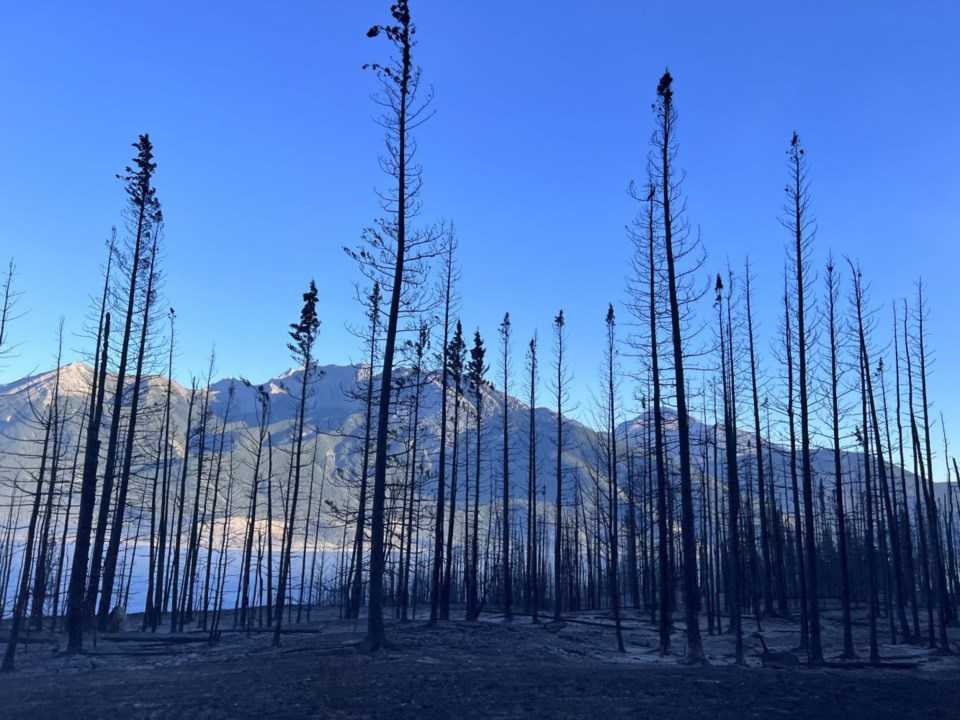Peter Shokeir | [email protected]
The Municipality of Jasper is entering the final stages of developing a risk assessment for climate hazards likely to affect the town in the future.
Council heard an update on the Climate Resliancy Capacity Building Project during its regular meeting on Sept. 5.
In December, the municipality received a grant of $80,000 from the Climate Resilience Capacity Building program, which is offered by the Municipal Climate Change Action Centre.
The program will help the community identify and plan for climate hazards such as severe drought, high intensity rainfall, extreme heat and severe storms.
The Resilience Institute is undertaking the work with the support of Associated Engineering.
CAO Bill Given told council the project would yield regional climate projections and other climate-related material that can be used to help communicate with the public.
“It will also deliver a whole community climate risk assessment that will consider climate impacts on our natural and built infrastructure, the health and wellness of our community and the culture of our community members,” Given said.
“And all of that will be wrapped up together in a final report with recommendations for adaptation strategies and next steps that we can take as a municipality.”
The likelihood of climate hazards was scored from one (low) to five (high).
“The effect of climate change on each climate hazard is assessed by reviewing historical and projected climate data to understand the anticipated change in frequency and/or severity,” the memo stated.
“From there, a likelihood score for that hazard can be assigned for present and future horizons.”
As an example, wildfires, hail and extreme heat received historical likelihood scores of two, but they all received future likelihood scores of five.
For each climate hazard, a list of impact statements is also being developed, which shows the different ways the hazard may affect Jasper’s social, natural and built environments.
The consequence of each impact will be scored from one (low) to five (high).
The overall risk is calculated for each climate hazard and impact statement as the product of likelihood and consequence, with likelihood being informed by science and consequence being informed by community feedback.
The resulting scores highlight the hazards that are the greatest risk to the municipality.
Coun. Rico Damota noted how summer hail was among the climate hazards that had a higher future likelihood score, specifically a 1,727 per cent increase.
“There’s something there that has alarming numbers attributed to it and something that we don’t see a lot here,” Damota said.
“I see that in this scoring the future likelihood of these incidences is going to be increasing in the mountain regions, I guess, and particularly our community as described.”
Henry Penn, research fellow at the Resilience Institute, told Damota that part of the process was determining what the data is saying versus what the locals are saying.
“What the data is telling us is going to be one part of the story, but what people’s lived experiences are and how many days of hail, in this instance, that people have experienced over their lifetimes and those two interactions of those two very valuable datasets, we’re going to dig into, and we can change the way that the risk assessment works based on that.”
Penn added that climate-related incidents were tracking north.
“Looking at southern Alberta now, there’s going to be a certain amount of those weather events, and that sort of general climatological field will be in the Municipality of Jasper by the time we get to the 2050 time horizon, and there's going to be unusuality along with that.”
Mayor Richard Ireland suggested that the parameters should be expanded to include intensity of lightning and hail and not just the number of days.
He noted that since Jasper got wildfire smoke from outside the region, using the parameter of average area burned within the region didn’t capture the entire phenomenon.
Ireland added how temperatures above freezing during winter should be included as a climate hazard, since it negatively affects Jasper’s winter economy.
The Resilience Institute and the Municipality of Jasper will soon engage with Jasper residents, businesses and stakeholders to validate some of the information and concepts in the assessment.




